Stars, bobbles, clouds, umbels, saucers, trumpets, plumes, globes, bells ... these are just some of the words we use to describe the flowers growing in our gardens. I’ve always had a particular grá for spires and spikes. Foxgloves, for example, with their slim, graceful racemes of dangling, tubular, bee-friendly flowers that are so useful for adding an important vertical accent to a border at this time of year, as are lupins with their soft, plump flower spikes in every colour of the rainbow. The same goes for delphiniums, the queens of the early summer border, with their towering, dramatically beautiful flower spires in shades of peacock blue, lavender, pink and white, and foxtail lilies (Eremurus) with their spectacular bottlebrush flowers in hues of gold, peach, pink and cream. Other examples include verbascums, penstemons, red hot pokers (kniphofia), many varieties of persicaria, monkshood (Aconitum), linaria, actaea, snapdragons (Antirrhinum), echium and varieties of veronica and veronicastrum.
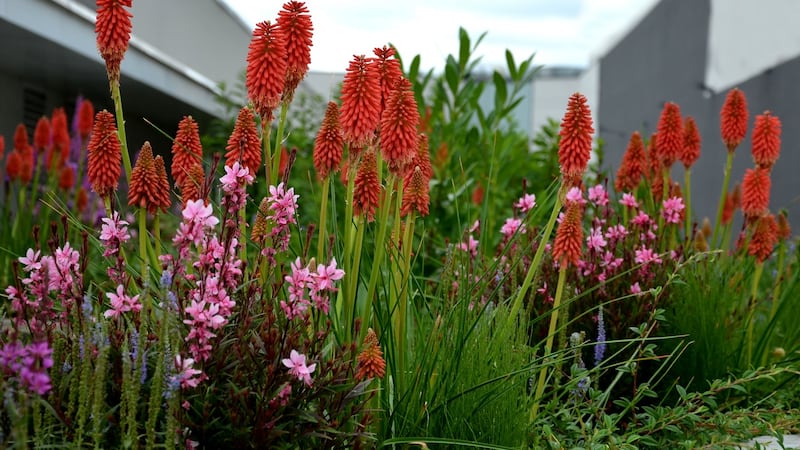
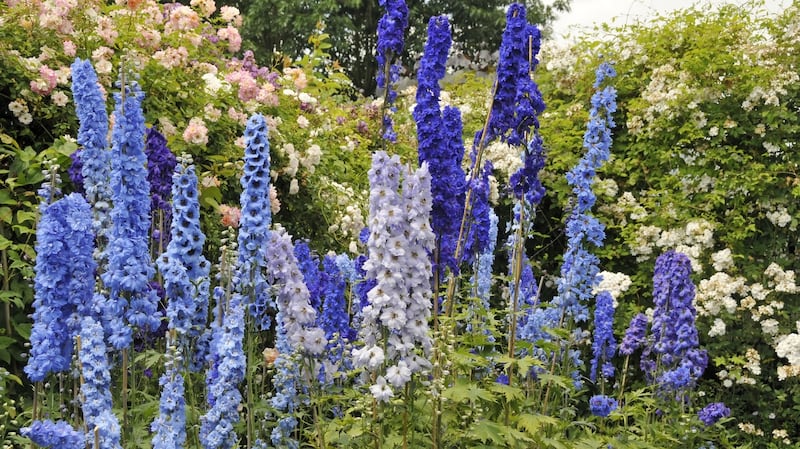
In fact, study the planting of any great summer flower border and you’ll notice that spikes and spires are almost inevitably among its defining features, adding energy and vertical interest to an outdoor space in a way that brings it magically to life.
Threaded through a planting scheme, these kinds of slender, upright flowers are also brilliant for creating a sense of space in the smallest of gardens, directing the eye upwards and counterbalancing the earthbound heaviness of lower-growing, clump-forming plants. Just a gentle warning: be careful not to overdo it; too many spires and spikes can make even the loveliest of planting schemes feel strangely restless and ungrounded. Instead, treat them as you would spices in the kitchen, where every pinch counts.
Ten great plants with flower spires/spikes for the summer garden
1. Foxgloves, a huge and varied genus of plants, are one of the glories of the early summer garden. Of the many different varieties available, both Digitalis 'Sutton's Apricot' and the white-flowered Digitalis 'Alba' are enduring classics. Easily raised from seed sown at this time of year, these short-lived perennials/biennials form a low rosette of semi-evergreen leaves from which their tall, slender, graceful flower spikes emerge in May-June. Foxgloves are happy in light shade or full sun so long as the plants are given a cool, fertile, moist but free-draining soil, and they often self-seed, although the resulting plants aren't always identical to their parents.
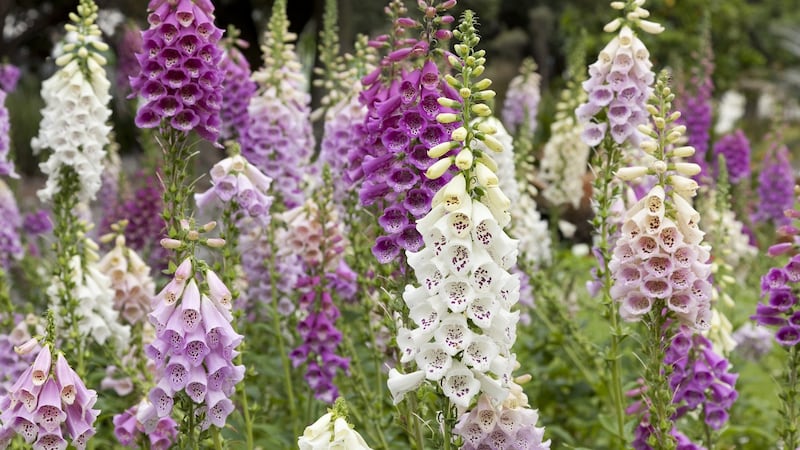
2. Toadflax (Linaria): Long-flowering, exceptionally pollinator-friendly and with an airy, delicate growth habit that belies its ability to happily tolerate both droughts and deluges. It has a way of looking right at home in any planting plan, from a contemporary gravel garden to a traditional cottage garden. Linaria purpurea (height of 60-90cm x spread of 30cm) is easy to raise from seed – a dainty, sun-loving perennial with very slender purple flower spires that appear in June-September. Equally garden-worthy varieties of this species include the shell-pink Linaria 'Canon Went', Linaria 'Springside White' while new favourites include the somewhat taller Linaria x purpurea 'Peachy', the soft-pink and white Linaria 'Dial Park' and L. 'Tarte au Citron' (lemon-rose), which have an average spread of 90-120cm x 40-60cm. Varieties of the fast-growing, more compact annual species Linaria maroccana (the Licilia Series) are also excellent and make fantastic cut-flowers. All like a moist but free-draining soil.
3. The perennial Persicaria amplexicaulis (bistort), ultra-hardy, floriferous and easy-to-grow, is another hero of the flower border with numerous spikes of pollinator-friendly, colourful flowers that appear from July until October-November. Best suited to a moist but free-draining soil in full sun/light shade. Many garden-worthy varieties are available, including the crimson-flowered P. 'Taurus' (90cm x 60cm), the white-flowered P 'Alba' (120cm x 90cm); P 'Fat Domino' (deep red flowers, height and spread of 1.2m x 75cm); and P. 'Alba' (white flowers, height and spread of 90cm).
4. Mulleins are one of those summer-flowering plants that you'll find growing in all great gardens, from the stately Verbascum bombyciferum (180cm x 60cm) whose towering, yellow flower spires emerge from sturdy rosettes of silver-grey, woolly leaves in summer to daintier species such as the purple-flowered Verbascum phoeniceum 'Violetta' (90cm x 45cm), which flowers in flushes from May-August. My new-found favourite is the drop-dead gorgeous Verbascum hybridum 'Southern Charm', whose slender flower spikes are the most beautiful smudgy shade of peach-apricot-lilac and look glorious in a border or a vase (90cm x 45cm). Short-lived perennials/ biennials, mulleins need a free-draining, not overly fertile soil in full sun.
5. Mexican giant hyssop or Korean mint, the colourful, vertical , edible flower spikes of Agastache 'Black Adder'; (pronounced a-gah-sta-kee) are loved by bees and other pollinators. Happy in full sun and tolerant of a wide range of soils as long as they're well-drained, this short-lived, borderline hardy herbaceous perennial produces its plump, inky-blue flower spikes from July to September. An added plus is its aromatic, edible foliage which smells strongly of liquorice when bruised or brushed against (90cm x 40cm).
6. Snapdragons have had a bad rap in recent years with their reputation as pretty, easy-to-grow, long-flowering annuals besmirched by the introduction of a host of ugly, acid-flowered varieties bred to be ultra- compact (which too often equals squat and dumpy). But new breeding programmes, many with the cut-flower market in mind, have seen the introduction of a host of graceful, long-stemmed varieties. Examples include the Chantilly series and the Madame Butterfly series, which are available in a wide range of colours including burgundy, peach, apricot, pink, white and purple, as well as outstanding new varieties such as Antirrhinum 'Costa Silver' (90-120cm x 10-30cm). Snapdragons like a rich but free-draining soil and a position in full sun/light shade and can be easily raised from seed surface-sown under cover in early autumn or late winter.
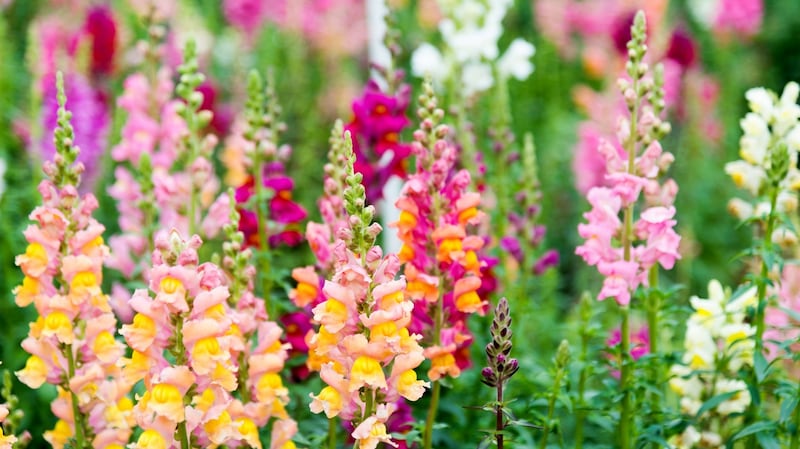
7. For cool, damp, large gardens or boggy areas along the banks of ponds or rivers where the soil never fully dries out it's hard to beat the aptly named Ligularia 'The Rocket' (1.8m x 1m), a stately, ultra-hardy perennial with handsome architectural foliage and tall racemes of black-stemmed, acid-yellow flowers that appear from June to August.
8. Bugbane: Also perfect for a cool, damp, humus-rich soil in a sunny or shady spot, the hardy herbaceous perennial, also known as Actaea simplex (Atropurpurea Group) 'Brunette', (150cm x 75cm), produces its tall, straight, maroon-stemmed, perfumed, pinkish-white flower spikes from August to October. The very decorative chocolate-purple foliage is another lovely feature of this late-flowering perennial.
9. Viper's bugloss (Echium pininana), only suitable for Irish gardens that enjoy a milder/coastal climate, needs a sheltered spot but is the king of flower spires with gigantic, bee-friendly, blue flower racemes that rise up out of large rosettes of coarse silver leaves in late spring to reach a height of 3-4m. Easily raised from seed sown in late spring or early summer, it will flower the following year. A white-flowered form, known as Echium pininana 'Alba' is also available. If it really likes its growing conditions, this tropical-style biennial will also happily self-seed.
10. Culver's root, as the tall, slender, pollinator-friendly flower spires of Veronicastrum virginicum are commonly known, appear from July to September and are great for adding elegant height, vertical structure and subtle colour to a planting scheme. This hardy perennial reaches an average height and spread of 120-50 x 60-90cm, and is happy in sun or light shade and in a wide range of soils as long as they remain sufficiently moist. Of the many varieties available, look out for V. 'Pink Glow' (silver-pink); 'Erica' (pale pink-red); and 'Diana' (white).
Recommended seed and plant stockists of the plants listed above include most good Irish garden centres as well as the following specialist suppliers: mountvenusnursery.com; kilmurrynursery.com; camolinpottingshed.com; ballyrobertgardens.com; seedaholic.com; mrmiddleton.com.
This Week in the Garden
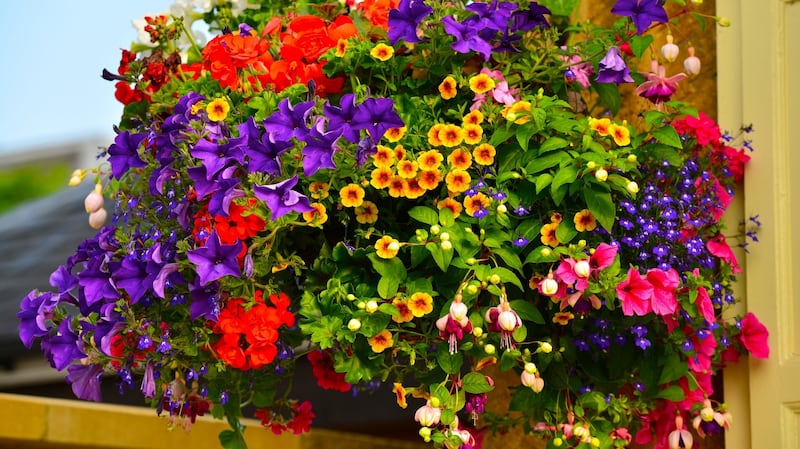
Don’t make the mistake of assuming that summer showers will be enough to water young plants growing in pots or hanging baskets. Instead it’s a good idea to gently stick your finger into the compost to check that it’s sufficiently damp. With larger pots and containers, make sure to give them enough water for it to gently soak right through to the base of the container. If in doubt, it’s a good idea to bottom-water by temporarily placing the base of the container to soak in a shallow saucer or tray of water so that the compost can easily wick it up.
Quickly revive tatty-looking lawns by neatening up the edges with an edging iron or a sharp spade. For properly straight lines, use a plank of wood or a taut piece of garden string as a guide.













